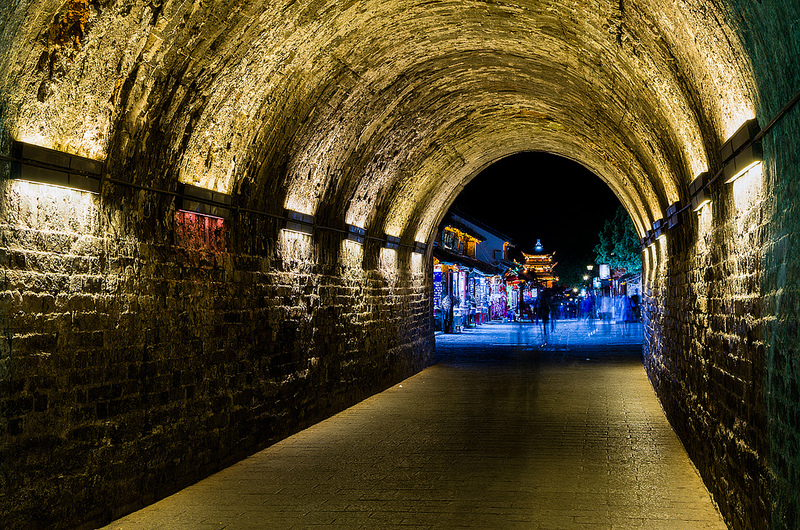[In conjunction with this new series of essays on the state of religion in China, we have published a companion piece on the history of religion in China, written by The Immanent Frame‘s Wei Zhu. Read What is religion in China? A brief history.—eds.]
 Before making projections about the future of religion and secularity in China, we should first take a step back and reconsider some notions about how China’s approach to religion has historically differed and sometimes conflicted with Western ideas and practices.
Before making projections about the future of religion and secularity in China, we should first take a step back and reconsider some notions about how China’s approach to religion has historically differed and sometimes conflicted with Western ideas and practices.
The first is the image of the People’s Republic as an axiomatically anti-religious state. One could certainly be forgiven for thinking of socialism and religion as oil and water. Marx famously declared religion to be the “opium of the people.” Lenin saw the Orthodox Church as the last and most recalcitrant bastion of Tsarist sympathy and insisted that the landed monasteries had to be destroyed in a way that was violent, thorough, and public. After the Second World War, the Catholic Church and Catholic-affiliated movements emerged among the most strident critics of Communism. Decades later, Catholic support would be instrumental in helping a Polish labor movement bring about the collapse of Soviet power in Europe.
The People’s Republic would seem, then, to be yet another example of the polar opposition of religion and socialism. Since 1949, China has run strikingly vindictive campaigns against such revered figures as the Dalai Lama, has sent students to destroy religious artifacts, and has repressed the Catholic Church, Tibetan Buddhists, Falun Gong, and Christian House Churches, as well as lesser-known groups such as Eastern Lightning.
Yet China’s stance towards religion has been more practical than ideological. Early campaigns, such as the 1951 suppression of the Catholic Church, were directed against specific groups that the state found dangerous, and the cadres who carried out religious policy were instructed to ensure that a movement against one group was not perceived as a purge of religion in general. Often this was achieved by recruiting other religious organizations to join in the recriminations. Even during the 1960s, when churches, monasteries and mosques were looted and vandalized in the campaign to “Destroy the Four Olds,” religion as a whole was not formally banned.
Like much of China’s cultural policy, attitudes towards religion have loosened considerably since the end of the Maoist era. The new line, put forward personally by Deng Xiaoping, and enshrined in the Central Committee document “Basic Ideas and Policies Concerning Our Country’s Religious Question in the Socialist Era,” insists that religion neither can nor should be destroyed by fiat, and that it can even be a socially progressive force.
Conflict with the West over religion, moreover, far predates the People’s Republic. Imperial China was never a confessional state and was, on the whole, tolerant of religious beliefs, the great exception having been the tradition of popular beliefs that could—and did—militarize against the state. The cosmopolitan Qing Empire embraced not only a wide swath of Chinese traditions but also Islam, the distinct form of Buddhism practiced in Tibet and Mongolia, and even a sprinkling of Orthodox Christianity, practiced predominantly by Russians living in the capital. Yet just one and a half centuries after the arrival of Jesuit luminaries such as Matteo Ricci, the Yongzheng Emperor found the Catholic influence sufficiently pernicious as to ban the propagation of Christianity altogether. The problem was not Chinese antipathy to Western belief as such, but rather a clash with a Catholic Church that sought to replicate in Asia the political preeminence that it enjoyed in Europe. Specifically, it was the papal decision to define practices of Confucian reverence as religious (and thus as idolatrous) that forced Chinese Christians to choose between their faith and the ritual duties that were legally required of every Qing subject.
But how relevant is this incident, known to historians as the “Rites Controversy,” for understanding the place of religion in China today? Both the Catholic Church and the Chinese state have come very far from what they had been in the early eighteenth century. Most notably with the Second Vatican Council, the Catholic Church has categorically abandoned many of its pretensions both to political power and to cultural universalism. The Chinese imperial system has of course ceased to exist at all. The inauguration of the Republic of China in 1912 not only launched a new system of government, but also a far reaching transformation in the relationship between state and society.
I must however disagree with those historians who argue that political modernization in Asia brought about a conceptual cleavage between the religious and secular. Although the Republican government no longer conducted rituals or built temples, they were still very much the guarantors of a moral order to which confessional religions could contribute but remained ultimately superfluous. The Chinese Republic redefined the relationship between state and citizen in a way that left little room for organized religion; it is easy to forget that Christian and Buddhist revival during these years came only at the often grudging discretion of the government. A parallel may be drawn with 1930s Japan, where Catholic students at Tokyo’s Sophia University refused to bow at the imperial shrine, prompting a crisis that was almost identical to the Rites Controversy. The only difference was the response of the Church, which was quick to side with the public authorities who insisted that the bow was an act of civic reverence and thus entirely compatible with the practices of confessional religion. The Church had clearly reached an accommodation with the state, but it was very far from anything we would call secularization.
There is no question that China remains extremely brutal in its suppression of certain types of religion. At the same time, the human rights discourses that are critical of China often hold the state to a caricature of Western standards, such as the absolute separation of church and state, which are not strictly maintained even in the United States and are quite strikingly different in other Western democracies. Issues of repression aside, the Chinese model of purging public space of religious symbols and discourse, while an affront to American sensibilities, would look very familiar (and indeed sensible) in France, for instance. The fact that much of the American model—such as the practice of according special tax status to religious groups, or of encouraging religious participation in the provision of public services like education and medicine—is not used in much of Europe suggests that China may be much less of an outlier than many within the advocacy community might think. Moreover, the great majority of religious freedom and human rights advocacy is focused on the two issues of underground Christianity and the place of the Dalai Lama in an autonomous Tibet. While these issues are important, we must also admit that they fall outside the experience of religion for most people in China and that they may well not be representative of where the state’s own concerns about religion lie.
What this means is that, while its many market, social, and political reforms are making China more familiar and understandable to Western observers, the country is highly unlikely to adopt American attitudes and policies towards religion. Since Deng Xiaoping announced the change of direction in the early 1980s, Chinese political thought on religion has advanced systematically into a coherent policy that is distinct both from classical Marxism and from the expectations of human rights advocates and religious communities overseas. On the one hand, it has learned from the Soviet experience that religion cannot be destroyed by central command. Influential scholars such as Gong Xuezeng and Ye Xiaowen took the lead in portraying religion as a socially progressive force, even employing linguistic gymnastics to explain that Marx’s original allusion to religion as an opiate actually referred to something more akin to a medical anesthetic used to help people through traumatic injuries. On the other hand, it maintains the materialist view that religion is a representation of social reality, if not necessarily an exploitative one. Religion can thus be a socially progressive force, even an ally to the Party in the pursuit of justice and public morality. However, if religion is allowed to act as the voice of an ethnic or confessional community, it is all the more vital to ensure that religious leaders are clearly subordinate to the leadership of the Party and to the nonnegotiable condition of national integrity. As such, Chinese state theory views religion as a social force to be monitored, controlled, and harnessed. It is unlikely ever to accept the Western understanding of religion as an individual choice, a concept that lies at the core of the West’s supposed secularization. Each generation of leaders since Deng Xiaoping has added to this evolving complex of ideas. We ignore or trivialize them at our peril.
At the same time, religious freedom is currently far less prominent an obstacle in US-China relations than it was a decade ago. This is in part because the repression of groups like Falun Gong has receded from public view, in part because trade and security have come to the fore, and in part because China is increasingly able to project its own social models and parameters onto international discourse. China has invested heavily in a new crop of institutions, including the State Administration for Religious Affairs (SARA, of which Ye Xiaowen served as director), as well as Christian, Islamic, and Buddhist theological training programs, and academic religious studies departments to explore new avenues for the practice of religion in public life.
With increasing clout on the world stage, and a greater interest in exporting cultural influence, China has been less inclined to respond to Western criticism and more willing to advance its own political and social development as an alternative model. With respect to human rights, it has met calls for political openness with the case that genuine human rights consist not in free speech but in economic security, arguing that the Chinese people are in fact far better off than people in putatively free societies such as India, Russia, or even the United States. In the same way, China will increasingly defend itself against charges of religious repression by promoting its own model of religion in society. Just as Chinese economic models have inspired development in Asia and Africa, we may soon hear echoes of what Zhu Xiaoming, past Director of Bureau of Ethnic and Religious Affairs, and current Standing Director of the Chinese Society for the Study of Human Rights, has called the “socialist view of religion with Chinese characteristics.”













